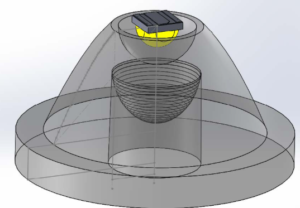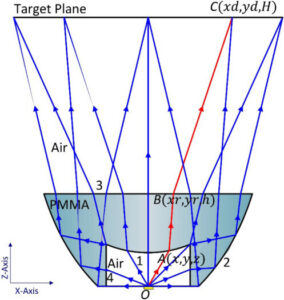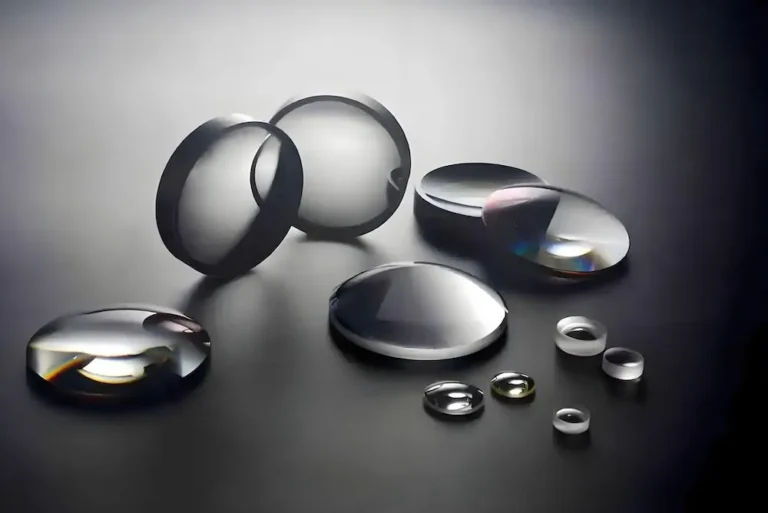What is a TIR lens?
TIR Lens (Total Internal Reflection Lens) are specially designed optical lens that use the phenomenon of total internal reflection of light within the lens and between the inner surface and the outer surface.
This enables precise control of light, such as focusing, collimation, or uniform illumination.
It is commonly used in scenarios requiring focusing, collimation and uniform lighting. It is particularly suitable for LED point lights.Using TIR lens can significantly improve the utilization rate of light and reduce energy loss.
Some fields like automotive lighting, flashlights, medical lighting, sensor systems and laser equipment are all applicable.

The working principle of TIR lens
The working principle of the lens is the phenomenon of total internal reflection.
Under normal circumstances, when light passes through the center of the lens, some of the light will undergo refraction on the front surface.
However, when other rays come into contact with the internal boundary of the lens, they will undergo total internal reflection because the incident angle is greater than the critial angle.
They will change direction and eventually converge to the target area.
This structure not only achieves efficient light collection, but also ensures the high concentration and controllability of the emitted light beam.
Thus, it improves the optical efficiency and lighting accuracy.
The advantages of a TIR lens
- High optical efficiency
Due to the principle of total reflection, one of the advantages of the TIR lens is high optical effciency.
The light control is more concentrated, reducing scattering and loss.
Compared with traditional reflection, the output efficiency has been improved.

- Precise beam control
Achieve focusing, collimation and uniform illumination
Offer a variety of beam angle options
Because of the total internal reflaction, the image is more clear than the common reflector.
- Compact structure, flexible design
It can be miniaturized and is highly suitable for applications that have strict requirements on space (such as car lights, detectors)
- Compatible with LED light sources
Especially suitable for point light sources (such as high-power LEDs)
What is the difference between reflector and TIR?
Their working principles are similar.
For both substances, reflection occurs when an incident angle is applied.
However, unlike reflection, TIR occurs when the incident angle is greater than the critical angle and makes more precise liight.
And total internal reflection can make the light more concentrated for control.
Application of the TIR lens
The TIR lens has many using situations due to its high light control ability. In some environments where precise transmittance is required, the lens is a very good choice.
- Spotlights
Focused beams for high-intensity illumination.
- Architectural Lighting
Accurate beam distribution for indoor and outdoor environments.
Therefore, some architectures need the lens to control the beam of light.
- Event Lighting
Well, consistent beams for performance venues.
- Rooftop lamp
For instance, some LED pendant lights require very precise control of the light.
Conclusion
The TIR lens is a special type of highly controlled glass and lens.
It boasts the highest efficiency, precision, high transmission rate and light control. It offers various beam angles for control, ranging from narrow points to wide beams, and it can achieve perfect total internal reflection.
Chen Yu uses the most advanced manufacturing techniques to produce different types of lenses for you, meeting all your needs.
Please feel free to come for consultation at any time. We will provide you with satisfactory service.

